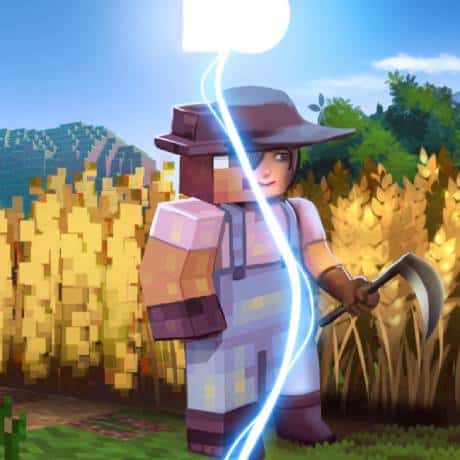You may have played Minecraft, yet it’s Time to MineReality; gaming in the real world is a powerful tool to shape the world around us. Beginning a vegetable garden is an excellent approach to cultivating healthy produce, embracing sustainability, and reducing expenses with rising food costs. A thriving garden is feasible with a backyard or a balcony.
Tips for Starting a Garden
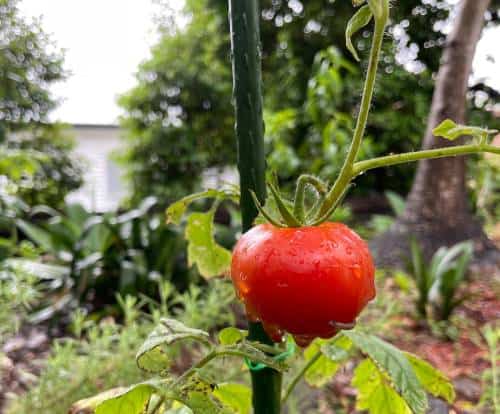 This tomato plant was one of my first gardening experiments. While many people consider tomatoes a vegetable, they are actually a fruit, botanically speaking. Tomatoes are versatile and delicious, making them a staple in many culinary contexts. This tomato plant produced beautiful and delicious fruit (and vegetables). As a hobbyist gardener, I appreciate the hard work and patience required to grow healthy and vibrant food, and I am pleased with the success achieved.
This tomato plant was one of my first gardening experiments. While many people consider tomatoes a vegetable, they are actually a fruit, botanically speaking. Tomatoes are versatile and delicious, making them a staple in many culinary contexts. This tomato plant produced beautiful and delicious fruit (and vegetables). As a hobbyist gardener, I appreciate the hard work and patience required to grow healthy and vibrant food, and I am pleased with the success achieved.
Now for some tips:
The Backyard
Here are some tips to help you get started with a Backyard Garden:
- Choose the right location: Make sure you choose a place with plenty of sunlight, good drainage, and an area shielded from strong wind. Most vegetables need at least 6 hours of sunlight daily. You may consider building raised beds or using containers if you have limited space.
It’s also essential to choose a spot protected from strong winds, which can damage your plants and make it more difficult for them to grow. Use windbreaks, such as tall plants or a fence, to reduce wind exposure.
- Plan your garden: Consider the types of plants you want to grow, how much space and sunlight they will need, and how much maintenance they will require. Usually, you will find this information on the seed packet or with the potted plants.
- Soil Test: A soil test before starting a garden is highly recommended. Soil testing can provide valuable information about your soil’s composition, including its pH level, nutrient levels, and texture. This information can help you determine what plants will grow well in your soil and what type of soil amendments or fertilizers you may need to add to improve soil quality.
Ideally, your soil should have a pH between 6 and 7, considered neutral. However, if your soil is too alkaline or acidic, you may need to amend it with lime or sulfur.
Without a soil test, you may be left guessing what your soil needs, leading to poor plant growth or death. Therefore, soil testing is an essential step in the garden planning process and can help ensure that your garden gets off to a healthy start.
- Add Mulch: Adding mulch to your garden can help retain moisture, suppress weeds, and improve soil fertility.
- Water Regularly: Ensure you regularly water your garden, especially during hot and dry weather.
- Maintain your Garden: Keep your garden looking its best by removing weeds, pruning plants, and fertilizing as needed.
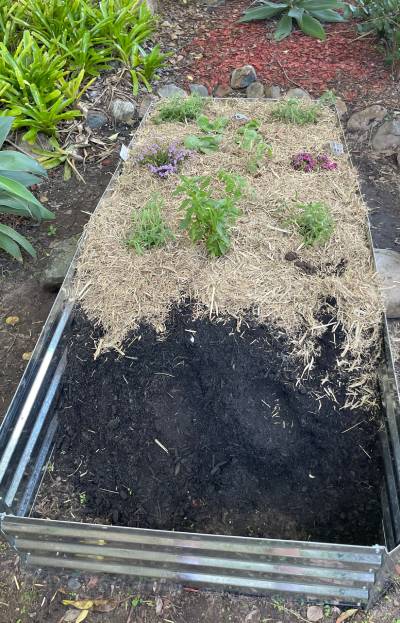 Raised beds: Raised beds are an excellent option for those with poor soil quality or limited space. They can provide a controlled growing environment and make it easier to care for your plants.
Raised beds: Raised beds are an excellent option for those with poor soil quality or limited space. They can provide a controlled growing environment and make it easier to care for your plants.
You can either buy raised Beds or build them from various materials, including wood, stone, and brick. Choose a material that will suit your needs and budget.
Ensure beds are 6-12 inches deep for optimal root growth. This will give your vegetables enough space to develop strong roots and produce a good yield.
The Patio, Balcony, Deck, Porch, or Veranda
Here are some tips to help you get started with a Patio, Balcony, Deck, Porch, or Veranda Garden:
- Choose the Right Plants: Opt for plants suitable for container gardening and thrive in your balcony environment, such as the amount of sunlight, wind, and other elements.
- Use Appropriate Containers: Make sure you choose the right size and material for your plants. For example, Terracotta pots are known for their porous nature, allowing water and air to pass through more easily. This assists with drainage and allows the roots to breathe, reducing issues such as root rot. In contrast, plastic pots tend to be less porous, limiting air and water movement, yet they are lighter and easier to move.
- Ensure Proper Drainage: Proper drainage is crucial to your plant’s health, so ensure your containers have drainage holes and that excess water can escape.
- Use High-Quality Soil: Use high-quality potting soil that is rich in nutrients and will promote healthy plant growth.
- Fertilize: Because container plants have limited access to soil nutrients, it’s essential to fertilize them with appropriate plant food. The frequency of fertilizing vegetables in pots will depend on several factors, such as the type of vegetables you are growing, the type of soil or growing medium you are using, and the stage of growth of your plants.
Generally, it is recommended to fertilize vegetables once every two to four weeks during the growing season. You can use a balanced fertilizer with equal parts of nitrogen, phosphorus, and potassium or a fertilizer with a higher ratio of nitrogen for leafy vegetables and a higher ratio of phosphorus and potassium for fruiting vegetables.
It’s essential to follow the instructions on the fertilizer package and avoid over-fertilizing, which can lead to nutrient buildup in the soil and harm your plants. Additionally, ensure to water your plants regularly to prevent the buildup of salts in the soil from the fertilizer.
- Water Regularly: Container plants can dry out quickly, so make sure you water them regularly and consistently to prevent drought stress.
- Prune as Needed: Keep your plants looking their best by pruning away dead or damaged leaves and stems.
- Consider Pest Control: Keep an eye out for common pests like aphids or spider mites, and take action if necessary to prevent plant damage.
Choosing and Planting Vegetables
What to Plant?
- Consider the growing season and your local climate when choosing what to plant. This will help ensure your vegetables receive the right growing conditions and produce a good harvest.
- Opt for vegetables that are easy to grow and suited to your climate. Some good options include tomatoes, lettuce, cucumbers, and carrots.
- Choose a variety of plants to ensure a balanced diet and keep your garden interesting. Nature likes variety, so consider planting a mix of leafy greens, root vegetables, and fruiting plants.
Seeds or Potted Plants
Whether you start with seeds or potted plants for your vegetable garden depends on your experience level, the type of vegetables you want to grow, and the time of year.
- Starting with seeds allows you to have more control over the entire growth process and may be more cost-effective. However, getting the plants established requires more time and effort, and there is a higher risk of failure, especially if you are new to gardening. Additionally, certain types of vegetables, such as carrots, do not transplant well, so starting with seeds is often the best option for certain vegetables.
You can start seeds indoors under lights or outdoors in seed trays, depending on the time of year and your climate. It’s important to keep your seedlings well-watered and to provide adequate sunlight as they grow. When your seedlings are ready, you can transplant them into your garden. Make sure to choose a cloudy day or transplant in the evening to reduce the stress on your plants. Providing adequate water for the first few days after transplanting is also important to help your plants get established.
- Starting with potted plants, on the other hand, can be more convenient and less risky, especially if you are new to gardening. You can purchase already established plants and have a better chance of survival. However, it can be more expensive, and you may have fewer options for the types of vegetables you can grow.
Ultimately, it comes down to personal preference and what works best for your situation. For example, if you have the time and resources, starting with seeds can be a rewarding experience. But if you want to simplify the process, starting with potted plants may be the better option.
Caring for Your Garden
To keep a garden thriving, it requires ongoing care and attention. This section will cover how to care for your garden, so it produces abundant healthy produce.
How to Water Your Garden Properly
Watering is a critical aspect of keeping your garden healthy. Maintaining the right balance of water is crucial as too much can lead to root rot, whereas too little can result in wilting and, ultimately, death of the plants.
Here are some tips on how to water your garden correctly:
- Water in the morning or evening, as the temperatures are cooler, and the water can soak into the soil before evaporating.
- Avoid getting water on the leaves of your plants, as this can encourage the growth of mold and mildew in some climates.
- Place a rain gauge in your garden to help you monitor the amount of rainfall you receive and to determine when to supplement with additional watering.
Best Practices for Fertilizing and Mulching
Fertilizing and mulching are two essential practices that can help your garden thrive. Fertilizing helps to provide plants with the nutrients they need to grow strong and healthy. Choose a fertilizer that is appropriate for the type of plants you have, and follow the instructions on the package.
Mulching helps to conserve moisture in the soil and suppress weeds. Use a 2 to 3-inch layer of organic material, such as shredded leaves, grass clippings, or bark chips, and spread it evenly around your plants. Be sure to keep mulch away from the stem of your plants to prevent rot.
Effective Methods for Controlling Pests and Weeds without Chemicals
Pests and weeds can be a major challenge for gardeners, but there are many effective methods for controlling them without using chemicals.
Here are some tips for controlling pests and weeds naturally:
- Encourage beneficial insects, such as ladybugs and lacewings, to your garden by planting a variety of flowers that provide nectar and pollen.
- Companion planting, some plants have natural pest-repelling properties. For example, planting marigolds or nasturtiums among your vegetable plants can help repel pests like aphids and whiteflies.
- Neem oil, this natural oil is extracted from the neem tree and is effective against a wide range of pests, including aphids, mites, and whiteflies.
- Cover your garden with a floating-row cover to prevent pests from reaching your plants.
- Use a mixture of vinegar and water as a weed killer.
- Hand-pull weeds when they are young and the soil is moist.
- Use a sharp hoe to chop off weed heads before they have a chance to produce seeds.
By following these best practices for watering, fertilizing, and controlling pests and weeds, you can keep your garden healthy and productive for years.
How is Gardening Good for Sustainability and your Carbon Footprint?
Final Thought
In conclusion, starting a vegetable garden can be a rewarding and fulfilling experience, providing fresh, healthy food for you and your family. By choosing the right site, size, and layout, preparing your soil, and selecting suitable vegetables to grow, you can set yourself up for success.
Proper care and maintenance, including watering, fertilizing, and pest control, will help ensure your garden thrives. With the right tools, resources, and patience, you can transform your backyard into a thriving vegetable garden that provides fresh produce year-round.
Plus, growing Your Own Garden is a Sustainable Practice for Reducing Your Carbon Footprint and Promoting Environmental Stewardship.
Join us in becoming healthier and more sustainable today!
Frequently Asked Questions:
When is the best time to start a vegetable garden?
The best time to start a vegetable garden depends on your location and the type of vegetables you want to grow. It would be best if you started planting in the spring after the last frost, but some vegetables can be planted earlier or later depending on their specific needs.
What should I consider when choosing a location for my vegetable garden?
When choosing a location for your vegetable garden, consider factors such as sunlight, soil quality, drainage, and accessibility. Your garden should receive at least six hours of sunlight daily, have well-draining soil, and be easily accessible for watering and maintenance.
What tools and supplies do I need to start a vegetable garden?
You will need essential gardening tools such as a shovel, rake, hoe, gloves, and watering can or hose. Additionally, you will need seeds or seedlings, soil amendments such as compost and fertilizer, and containers or raised beds if you are not planting directly in the ground.
What are some easy vegetables to grow for beginners?
Some easy vegetables for beginners include tomatoes, lettuce, beans, peas, zucchini, and cucumbers. These plants are relatively low-maintenance and can be grown in containers or on the ground.
How often do I need to water my vegetable garden?
The frequency of watering your vegetable garden depends on the weather, soil type, and the needs of your specific plants. Generally, you should water your garden deeply once or twice a week, but you should monitor the soil moisture regularly and adjust your watering schedule as needed.
How do I prevent pests and diseases in my vegetable garden?
To prevent pests and diseases in your vegetable garden, practice good garden hygiene by keeping the area clean and debris-free. Additionally, rotate your crops to prevent soil-borne diseases, and use organic pest control methods such as companion planting and natural insect repellents.
How long does it take for vegetables to grow?
The time it takes for vegetables to grow depends on the type of vegetable and the growing conditions. Some vegetables, such as radishes and lettuce, can be harvested in as little as four to six weeks, while others, such as tomatoes and peppers, can take several months to mature.
How do I know when my vegetables are ready to harvest?
The best way to determine when your vegetables are ready to harvest is to refer to the seed packet or plant label for guidance. Additionally, you can monitor the vegetables’ size, color, and texture and harvest them when they are mature and ready to eat.
What is a Natural Bug Repellent?
Natural bug repellents, such as essential oils, are made from natural ingredients that deter pests without harming the environment. Some popular natural bug repellents include garlic, chili pepper, and neem oil.
Should I Put Grass Clippings in the Garden?
Yes, grass clippings can be added to the garden as mulch or compost. They provide nutrients to the soil and help retain moisture. Just make sure that the clippings are free of chemicals and are not too thick, as they can lead to matting and create an environment for disease to thrive.
What Should the Depth of a Raised Bed Be to Grow Corn, Potatoes, and Beans?
Raised beds should be at least 6-12 inches deep for optimal root growth. Corn needs a depth of at least 12-18 inches, potatoes require a depth of 12-14 inches, and beans can be grown in a 6-12 inches deep bed.
What’s the Best Way to Control Weeds?
The best way to control weeds is through prevention and early removal. Mulch around your plants to suppress weed growth and keep the soil moist. Hand-pull or hoe weeds when small, and remove the entire root to prevent regrowth.
How Often Should a Vegetable Garden be Watered?
The watering frequency will depend on the climate and the specific needs of your plants. Vegetables generally need 1-2 inches of water per week from rainfall or watering. Check the soil regularly and water when the top 2 inches are dry.
How Do I Stop Birds and Insects from Eating My Vegetables?
There are several methods to deter birds and insects from eating your vegetables, including row covers, bird nets, and insecticides. Companion planting, such as planting herbs and flowers alongside your vegetables, can also help to repel pests.
The Benefits and Use of a Worm Farm for a Vegetable Garden
A worm farm, also known as vermiculture, is a composting system that uses worms to break down organic matter into rich fertilizer for your garden. Worm compost provides a steady source of nutrients for your plants, improves soil structure, and reduces the amount of waste sent to landfills.









 Snacks
Snacks Water
Water Eye Sight
Eye Sight Hearing
Hearing








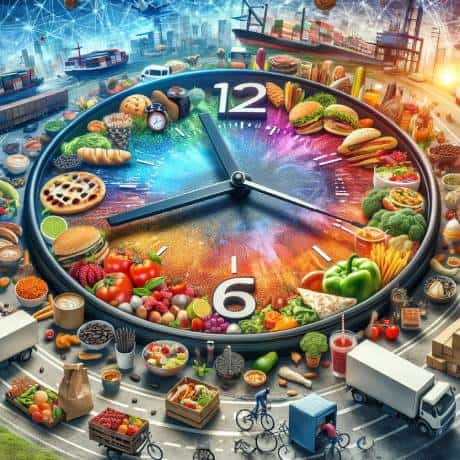









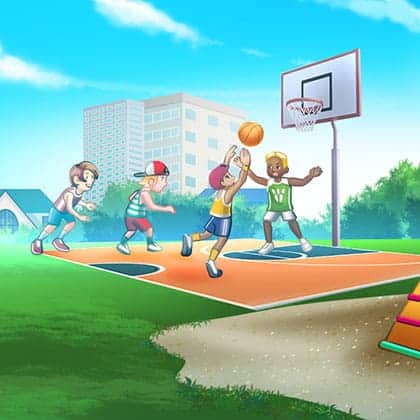



 This tomato plant was one of my first gardening experiments. While many people consider tomatoes a vegetable, they are actually a fruit, botanically speaking. Tomatoes are versatile and delicious, making them a staple in many culinary contexts. This tomato plant produced beautiful and delicious fruit (and vegetables). As a hobbyist gardener, I appreciate the hard work and patience required to grow healthy and vibrant food, and I am pleased with the success achieved.
This tomato plant was one of my first gardening experiments. While many people consider tomatoes a vegetable, they are actually a fruit, botanically speaking. Tomatoes are versatile and delicious, making them a staple in many culinary contexts. This tomato plant produced beautiful and delicious fruit (and vegetables). As a hobbyist gardener, I appreciate the hard work and patience required to grow healthy and vibrant food, and I am pleased with the success achieved. Raised beds: Raised beds are an excellent option for those with poor soil quality or limited space. They can provide a controlled growing environment and make it easier to care for your plants.
Raised beds: Raised beds are an excellent option for those with poor soil quality or limited space. They can provide a controlled growing environment and make it easier to care for your plants.
